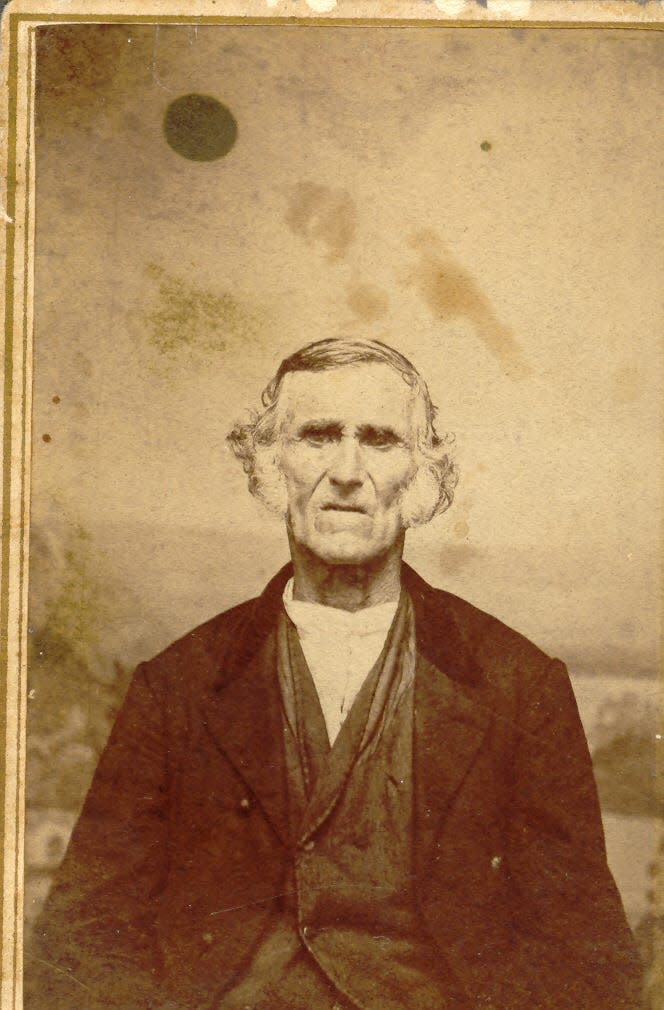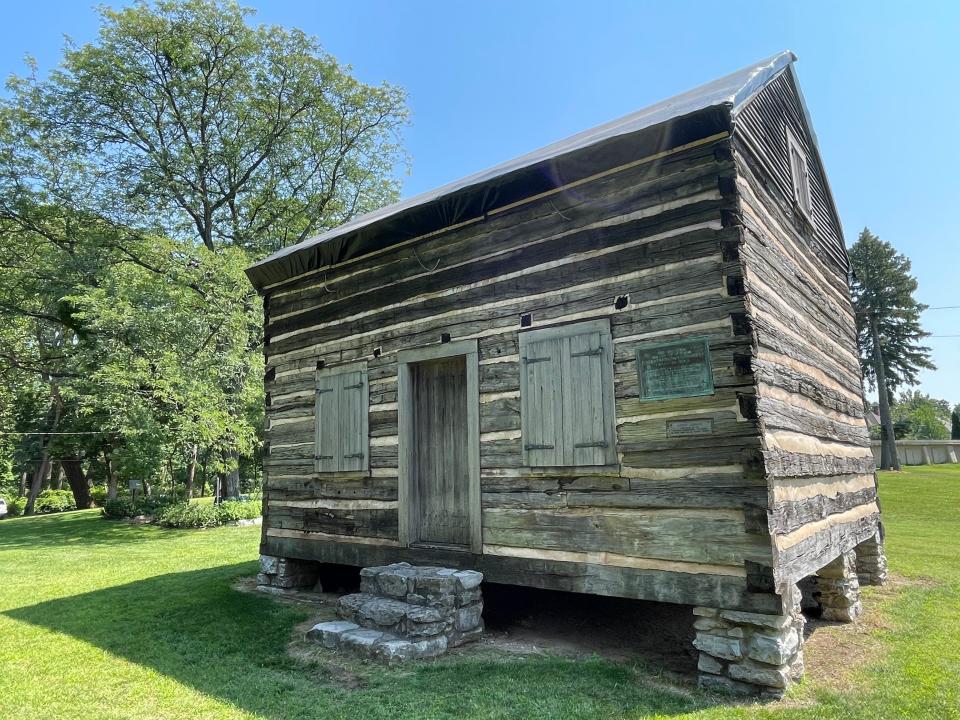SOUTH BEND — The historic Navarre Cabin, the oldest structure in St. Joseph County, will soon move from the park where it’s sat for 120 years.
The History Museum, the cabin’s owner since saving the structure from demolition in 1895, will move the 1820 home from Leeper Park to the museum’s campus on Wednesday. Museum leaders plan to make the cabin the center of an immersive exhibit about the lives of pioneers and Native Americans in the early 19th century.
The South Bend-St. Joseph County Historic Preservation Commission approved the move in December, three years after denying the museum’s request to relocate the cabin.
This time, members were swayed by the need to move the cabin to ensure its continued use as an educational exhibit. School administrators weren’t keen to continue annual field trips to the cabin, citing a lack of working restrooms nearby, minimal parking for school buses and ample distractions for students.
“The distance from our campus prevented us from utilizing the structure to its fullest capacity,” Brian Harding, executive director of The History Museum, said in a statement Friday.
“Where before we were only able to provide educational opportunities for schools and the community on a very limited basis,” Harding said, “with the move we can offer daily experiences.”
The cabin will move about a mile from the riverside park where it’s sat since 1904 to a 0.75-acre site west of the museum’s campus, at 897 W. Thomas St. It was last moved to its current site within Leeper Park in 1954.
The cabin will move from about 9 to 11 a.m. Wednesday, a spokeswoman for the museum said. The route takes the structure south on Lafayette Boulevard past Memorial Hospital, west on Colfax Avenue, south on William Street, west on Washington Street and south on Chapin Street before arriving at the museum’s campus.
Who was Pierre Navarre?
Pierre Freischutz Navarre, the first person of European descent to settle in St. Joseph County, came to the area in 1820 as an agent of John Jacob Astor’s renowned American Fur Company. Though he was born in 1787 in Detroit, Navarre had French ancestry.
Navarre married a Potawatomi woman named Keshewaquay, who adopted the name Angelique. The couple had seven children and lived in the cabin on the river’s north side, near what is now 123 W. North Shore Drive.
But Navarre’s family, along with many local natives, were forced to move to Kansas along the Trail of Death in 1835, according to the museum. When the U.S. government forcibly removed the Potawatomi from the area in the 1840s, Navarre traveled alongside them. He returned to South Bend after his wife’s death on the Kansas reservation, where he died two days after Christmas in 1864.

The new exhibit will focus on local and European goods typical of the fur trade, the ways the growing community managed its livestock and how early settlers took care of their health.
“Moving this significant artifact in our collection in closer proximity to the museum,” Harding said, “will allow us to protect and preserve it even more effectively for another 200 years.”
The History Museum promised the HPC to apply for “Local Landmark” status for the cabin within 30 days of its move. The museum also must repair the cabin’s roof, which has been covered with a tarp for nearly three years, by the end of 2024.


Email South Bend Tribune city reporter Jordan Smith at [email protected]. Follow him on X: @jordantsmith09
This article originally appeared on South Bend Tribune: Historic Navarre Cabin to leave South Bend park for History Museum
Source Agencies
